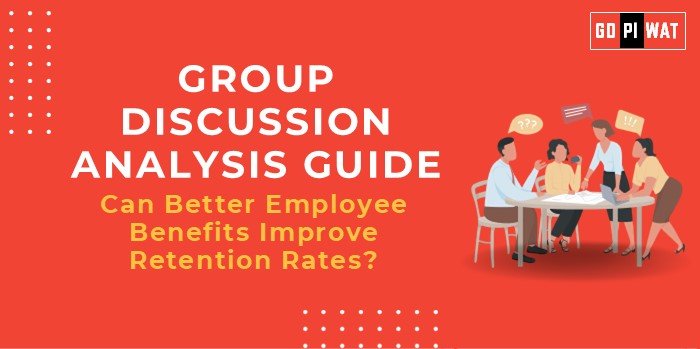📋 Group Discussion Analysis Guide
🌟 Can Better Employee Benefits Improve Retention Rates?
🌐 Introduction to the Topic
Opening Context: “In an era where talent is a critical asset, companies face significant challenges in retaining employees amidst rising competition and workforce expectations. The debate on whether improving employee benefits directly enhances retention has gained global relevance.”
Topic Background: Employee retention strategies have evolved to include robust benefits programs such as health coverage, flexible work options, and professional development opportunities. With the “Great Resignation” and remote work trends reshaping corporate dynamics, this topic examines how benefits impact job satisfaction and long-term retention.
📊 Quick Facts and Key Statistics
- 🌍 Employee Turnover Rate: 20% globally in 2023—high turnover disrupts productivity and costs businesses 33% of an employee’s salary to replace them (Gallup).
- ⚖️ Work-Life Balance Impact: 72% of employees consider work flexibility crucial to job retention (McKinsey, 2023).
- 💼 Benefits and Loyalty: 78% of employees report they are more likely to stay with a company offering comprehensive benefits (MetLife Employee Benefit Trends Survey).
- 🏥 Health Insurance Role: 80% of employees say employer-sponsored health coverage heavily influences job decisions (SHRM Report, 2023).
👥 Stakeholders and Their Roles
- Employers: Design and implement benefits programs to align with workforce needs.
- Employees: Assess and prioritize benefits impacting their satisfaction and loyalty.
- HR and Leadership: Act as strategic drivers for retaining talent through innovative policies.
- Policy Makers: Influence labor laws related to compensation and benefits.
🏆 Achievements and Challenges
✅ Achievements
- 💪 Improved Retention Rates: Companies offering competitive benefits retain 56% more employees than those with minimal benefits.
- 📈 Increased Productivity: Satisfied employees with healthcare and wellness benefits show a 17% increase in workplace productivity.
- 🌟 Positive Corporate Image: Organizations prioritizing employee well-being rank higher in employer branding indices.
⚠️ Challenges
- 💸 High implementation costs for comprehensive benefits programs.
- 🔄 Misalignment between benefits offered and diverse workforce needs.
- 🌍 Global Comparison: Countries like Sweden and Denmark offer extensive employee benefits, resulting in higher retention rates compared to nations with minimal policies.
📖 Case Study
Salesforce: By providing robust healthcare, flexible work options, and mental health support, Salesforce has achieved a retention rate of 91%.
📐 Structured Arguments for Discussion
- 💬 Supporting Stance: “Better employee benefits enhance job satisfaction, which fosters loyalty and reduces turnover, as seen in organizations with competitive health and flexibility programs.”
- 🤔 Opposing Stance: “Employee benefits alone cannot guarantee retention; factors like leadership, culture, and growth opportunities play a significant role.”
- ⚖️ Balanced Perspective: “While better benefits positively influence retention, they must be integrated with strong leadership, professional growth, and inclusive work culture to yield sustainable results.”
📈 Strategic Analysis of Strengths and Weaknesses
- Strengths: Enhances job satisfaction, attracts top-tier talent, and boosts productivity.
- Weaknesses: High costs of implementation, risk of benefits misalignment.
- Opportunities: Customizing benefits for a diverse workforce, integrating AI-driven platforms.
- Threats: Competitive pressure, underutilization or misuse of benefits.
📋 Connecting with B-School Applications
- 💼 Real-World Applications: Analyze the ROI of employee benefits in HR projects and cost-benefit analysis in finance case studies.
- 📚 Sample Interview Questions:
- “How do employee benefits influence organizational growth and retention?”
- “What innovative benefits strategies can companies adopt post-pandemic?”
- 💡 Insights for B-School Students: Tailoring benefits to generational needs and integrating benefits into ESG frameworks.


